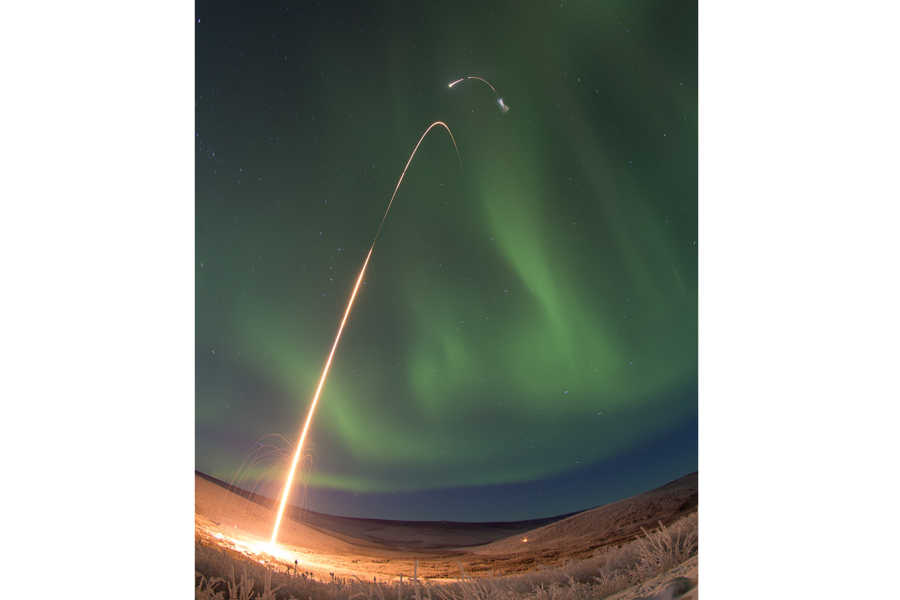Why did NASA send a probe into the Northern Lights?
Loading...
While most find captivating the vivid glow and dancing curtain-like arcs of the Northern Lights, it's what happens after the light show that has captured the interest of NASA scientists.
NASA, in partnership with Utah State University, launched a suborbital sounding rocket carrying the Auroral Spatial Structures Probe (ASSP) in the early morning on Wednesday. The probe, sent up from the Poker Flat Research Range in Alaska, contains seven payloads designed to collect information about the heating of the thermosphere that takes place following auroral events.
"They [the payloads] are ejected from the rocket in different directions at high velocity, essentially acting as space buoys, to create a network of measurements that will allow us to see the structure of the aurora over a much wider area than was possible before," Tim Neilsen, a program manager for ASSP from Utah State University's Space Dynamics Laboratory, said in a release.
Scientists already have a general idea of what causes an auroral event. Charged particles from the Sun, referred to as solar wind, enter the Earth's atmosphere and come into contact with particles in the magnetosphere. The result of these interactions is ionization of the atmosphere and, consequently, light emissions visible to the human eye.
Auroral events have been known to occur on a number of planets where an iron core is present to produce a magnetic field, including Jupiter and Saturn. On Earth, the Aurora Borealis, or the Northern Lights, is visible from places of high latitudes in the northern hemisphere like Alaska and Iceland. Its southern counterpart, the Aurora Australis, can be viewed from Antarctica, Australia, and the tip of South America.
But those particle interactions do more on Earth than simply produce spectacular views. They also affect satellites orbiting our planet.
"Solar winds produce electric currents in the upper atmosphere where auroral activity occurs, and those currents produce heat that can expand the thermosphere which increases the drag on satellites significantly," said professor Charles Swenson, director for the Center for Space Engineering at Utah State University, in the release.
For satellites within 620 miles of the Earth's surface, an expanded thermosphere can increase the drag by 1,000 percent or more for several days, according to Swenson. And when a satellite experiences that significant a drag for so long, its orbit can decay.
The process by which the thermosphere increases in temperature this way is known as Joule heating. While Joule heating is by no means a mystery to scientists - it's the same process that takes place when an electric oven heats up - the probe could provide insight into how they can deal with the issue.
"The energy flow computed will allow scientists to understand when and where the Earth's thermosphere will heat and expand due to the Joule heating process," said Swenson.








